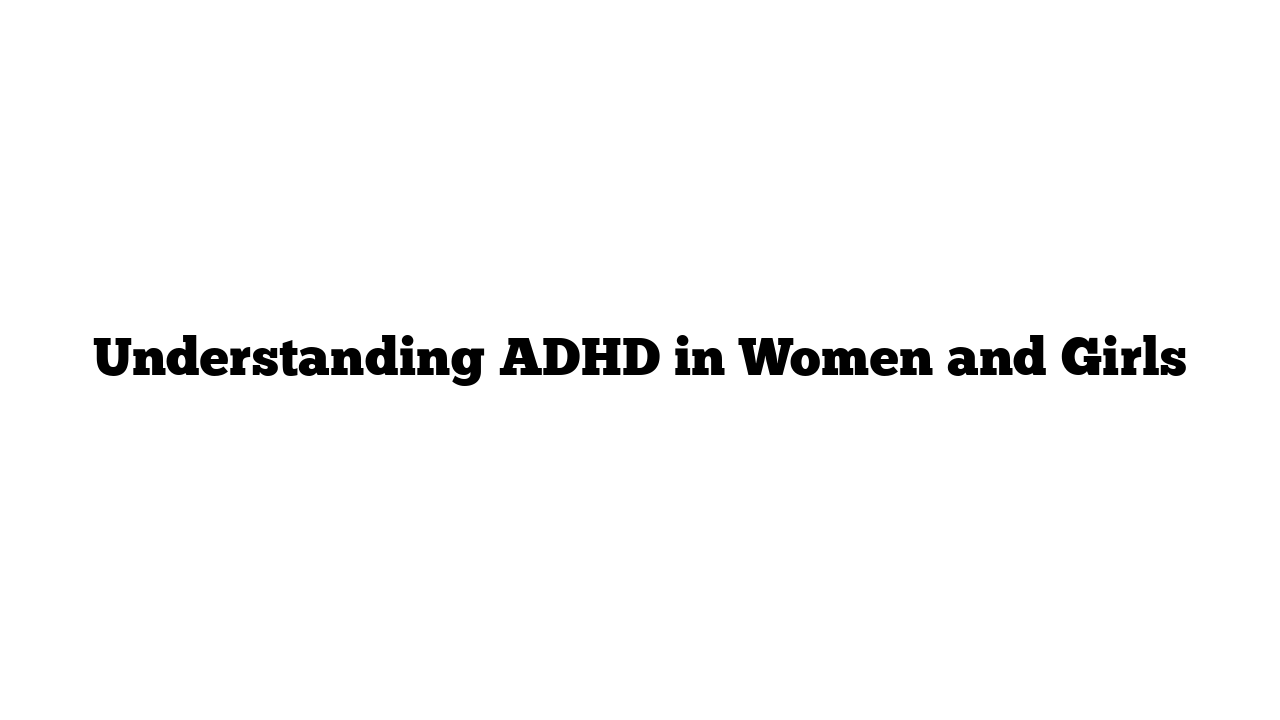Disclaimer: This article is for educational purposes only. If you are experiencing symptoms of ADHD, it’s best to consult a healthcare professional for a proper diagnosis.
For many years, ADHD was widely perceived as a condition affecting primarily young boys, who were often characterized as hyperactive, disruptive, and disobedient. However, we now understand that ADHD affects individuals of all genders, including women and girls. The presentation of ADHD in women can differ significantly for various reasons.
Why is ADHD in Women Different?
According to the CDC, 12.9% of boys are diagnosed with ADHD, compared to only 5.6% of girls. This discrepancy raises questions: is ADHD truly less common in girls, or is it simply underreported?
Historically, most ADHD research has focused on boys and men, leading to criteria that do not accurately reflect the experiences of women or gender-diverse individuals. As a result, ADHD in women, transgender, and non-binary people may present differently, leading some to mistakenly view it as a different condition or merely a personality trait.
While the neurological impacts of ADHD are consistent across all genders, the way it manifests in behavior often differs. Generally, women are more likely to exhibit inattentive ADHD, characterized by symptoms such as forgetfulness, disengagement, and distractibility.
Inattentive ADHD is often misattributed to anxiety or mood disorders. Many symptoms in women have been dismissed as mere personality quirks, such as being “spacey” or “chaotic.” This pattern is especially prevalent in young girls, resulting in delayed or missed diagnoses.
Symptoms of ADHD in Women
ADHD manifests uniquely in each individual, with symptoms in women often differing from those in men. Here are some questions to consider:
- Do people often describe you as spacey or zoned out?
- Do you struggle to maintain a balanced routine?
- Do you frequently feel defeated after a hectic day?
- Is cleaning the house a challenging task for you?
- Do you experience racing thoughts that overwhelm you?
- Is it hard for you to think before speaking?
If you answered “yes” to several of these questions, you may be experiencing symptoms of ADHD. Women often exhibit more internalized symptoms compared to men, such as racing thoughts and difficulty concentrating, rather than the more externalized hyperactivity commonly seen in boys.
ADHD can significantly impact various aspects of life, including school, work, and relationships. It’s essential to remember that everyone’s experience with ADHD is valid and unique.
Strategies for Managing ADHD
ADHD often coexists with conditions like anxiety, depression, and personality disorders, making daily life challenging. Here are some strategies to help you manage ADHD effectively:
- Seek an Accurate Diagnosis: Understanding your condition is crucial. A proper diagnosis can help you take the necessary steps toward leading a healthier life.
- Time Management: Establishing a clear daily routine can be immensely beneficial. Allow yourself sufficient time for each activity, and if you fall behind, don’t be too hard on yourself; progress takes time.
- Exercise Regularly: Physical activity is beneficial for both mental and physical health. Even a short 20-minute walk can enhance mental clarity and boost your mood.
- Use Visual Prompts: To help remember tasks, consider using colorful reminders. Write down important notes and stick them where you’ll see them often, like on your fridge.
Implementing these strategies may ease the challenges of managing ADHD. Remember, change takes time, and it’s okay to feel overwhelmed at times. You’re not alone, and help is available.
If you found this information helpful, consider visiting medicaltimes.io for more tips on navigating ADHD!
